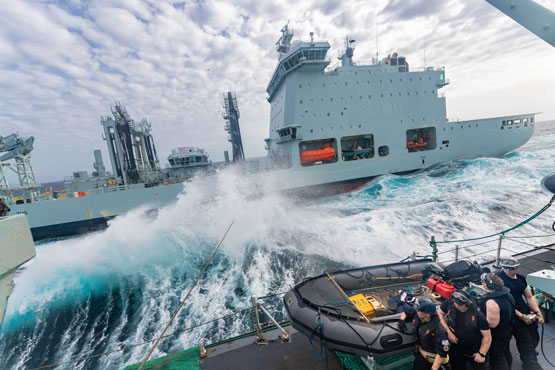September 22, 2023
With electric cars becoming increasingly popular, it’s easy to see how quickly electrification is taking a hold of the car market – but what about Navy ships? Defence Research and Development Canada (DRDC) is tackling that very question.
Dr. Gisele Amow, a defence scientist with DRDC, is leading the Naval Electric Ship Technologies (NEST) project. This project is assessing the feasibility of electrification for the Royal Canadian Navy (RCN) fleet. It’s part of the effort to reduce greenhouse gas emissions from ship platforms and operations – while ensuring operational capability is maintained.

The Naval Electric Ship Technologies (NEST) project is assessing the feasibility of electrification for the Royal Canadian Navy (RCN) fleet. Photo credit: Cpl Connor Bennett, Canadian Armed Forces
The project received $1.3 million over three years from the Greening Government Fund and is expected to run until 2026. Besides DRDC and DND partners, the project team includes partners from the National Research Council of Canada (NRC) and Natural Resources Canada (NRCan)’s CanmetENERGY.
The project has four components:
- Conducting feasibility studies (such as determining the degree to which minor/auxiliary RCN vessels can be made electric
- Collecting vessel information and energy data and conducting analysis to simulate expected power and energy demands of Navy ships
- Understanding the safety considerations of potential electrification technologies
- Identifying operational opportunities and challenges with adopting fully or hybrid electric vessels
The project will look at a range of options for electrification or hybrid power for the Navy’s fleet from large ships such as frigates. The project will consider limitations to electrification, such as changes needed to port infrastructure, or limitations on range.
